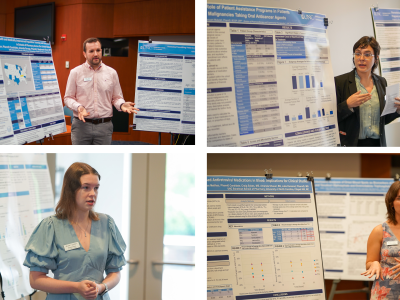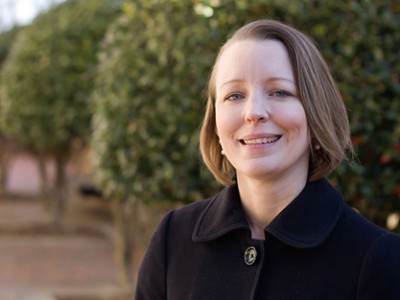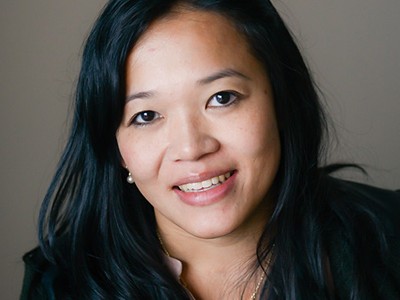April 6, 2015

Uninsured cancer patients are asked to pay from two to forty-three times what Medicare would pay for chemotherapy drugs, according to a new study from the University of North Carolina at Chapel Hill.
Researchers led by Stacie Dusetzina, PhD, reviewed newly available Medicare data on what physicians not affiliated with hospitals charged for chemotherapy drugs delivered intravenously in 2012. For example, uninsured patients who did not negotiate the billed amounts could expect to pay $6,711 for an infusion of the colorectal cancer drug oxaliplatin. However, Medicare and private health plans only pay $3,090 and $3,616 for the same drug, respectively.
“Charges can be thought of as the retail or sticker price of health care,” Dusetzina says. “Medicare and insurers don’t pay that price; they pay a discounted rate. However, uninsured patients don’t have the bargaining power, or they may not try to negotiate for a better price.”
On average, Medicare paid approximately 40 percent of what uninsured patients were charged for chemotherapy drugs. Private insurers paid nearly 57 percent of the amount charged on average.
The price paid varied widely based on the drug and the payer. Overall prices per chemotherapy infusion ranged from $59 of 500 mg of fluorouracil to $9,225 for 10 mg of bevacizumab. Medicare reimbursements ranged from just over 2 percent to 54 percent of the billed amount while the range for private insurers was 20 percent to 61 percent. Dusetzina is an assistant professor at the UNC Eshelman School of Pharmacy and Gillings School of Global Public Health and a member of the Lineberger Comprehensive Cancer Center. The team’s findings were published in the journal Health Affairs.
Why It Matters

Does it matter what the uninsured are charged if everyone in the U.S. is supposed to have insurance under the Affordable Care Act? Yes, Dusetzina says.
“In states like North Carolina that didn’t expand Medicaid, there is a large group of people who can get insurance on the federal exchange but cannot get subsidies because the law assumed they would be covered by Medicaid,” she says.
The pending Supreme Court case King vs. Burwell challenging the legitimacy of federal health-care subsidies also has the potential to affect everyone who bought subsidized health insurance through healthcare.gov in states that did not set up their own exchanges. Early estimates suggest that as many as 8 million Americans may be left uninsured in 2016, depending on the outcome of this case.
Office Visit Costs
In addition to estimating costs for infused chemotherapy drugs, the researchers also looked at what cancer patients were asked to pay for a doctor visit. Uninsured patients were billed from $129 to $391, depending on the complexity of the visit. Medicare paid between $65 to $188 and private insurance paid $78 to $246 for the same visits
The overall effect of the pricing differences documented by the researchers is that uninsured patients who do not negotiate provider charges could face bills that are at least twice as high as insurers pay for the same services, Dusetzina says.
“One key concern here is that patients without insurance could be asked to pay more – not just more than an insured person but more than Medicare or private health insurance plans. This is unreasonable,” she says. “There needs to be more transparency and less variability in health care pricing.”
Lessons from New Data
In addition to Dusetzina, the research team includes Ethan Basch, MD, MSc, director of the UNC Lineberger Cancer Outcomes Research Program, and Nancy Keating, MD, MPH, a professor of health-care policy at Harvard Medical School. The group used the new Medicare Provider Utilization and Payment Data Public Use File and other sources to evaluate physician charges, reimbursements by Medicare and large private health plans, and expected patient cost sharing for outpatient oncology care.
“Information on reimbursement has been available for many years: we know how much Medicare and private insurers pay for drugs,” Dusetzina says. “This is the first time we’ve gotten a comprehensive look at provider charges. There is still a gap in evidence where we don’t know how many patients negotiate or work with their providers to lower these charged amounts. However, using data to highlight variation in prices is one step toward increasing transparency.”
The Study Authors
- Stacie Dusetzina, PhD, is an assistant professor in the UNC Eshelman School of Pharmacy and the UNC Gillings School of Global Public Health and a member of the UNC Lineberger Comprehensive Cancer Center.
- Ethan Basch, MD, MSc, is director of the Cancer Outcomes Research Program of the Lineberger Comprehensive Cancer Center and an associate professor in the UNC School of Medicine and the UNC Gillings School of Global Public Health.
- Nancy Keating, MD, MPH, is a professor of health-care policy at Harvard Medical School and an associate physician in the Division of General Internal Medicine at Brigham and Women’s Hospital in Boston.
Grant Support
Stacie Dusetzina is supported by the National Institutes of Health’s Building Interdisciplinary Research Careers in Women’s Health K12 Program and the North Carolina Translational and Clinical Sciences Institute (Grant No. UL1TR001111). Nancy Keating is supported by the National Cancer Institute (Grant No. K24CA181510).
Latest News

RASP poster presentations capture student research

Delesha Carpenter promoted to full professor


